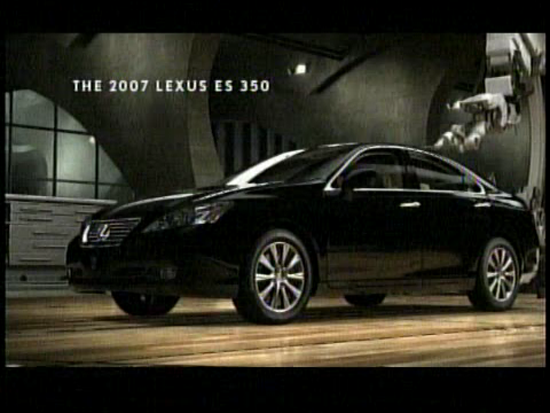TV Tuner Comparisons
How does the NVIDIA DualTV MCE compare with the ATI Theater 550 Pro and All-In-Wonder series of cards? We'll start with power consumption, and we tested each of the three cards at three different states: while the system is idle, while watching live TV, and while recording live TV. Here are the results.| System Power Draw | |||
| Idle | Watching TV | Recording TV | |
| NVIDIA DualTV MCE | 162 | 179 | 189 |
| ATI MSI Theater 550 Pro | 159 | 170 | 175 |
| ATI X1800 AIW | 154 | 172 | 172 |
For reference, the power draw of the system without a TV tuner card installed (excluding the AIW) is 145 Watts. We used an X1800 GTO for the main graphics card with the DualTV and Theater 550 cards, in order to keep the power draws as close as possible to that of the AIW card. We can see from the table that the Theater 550 and AIW draw less power than the DualTV while watching and recording live TV, which makes sense given the DualTV's ability to record two sources as opposed to the other cards' one.
Something else we're interested in looking at is channel switching speed between these three cards, as this is something that can vary between different TV tuner cards. The type of tuner on the card can affect this, and all three of these cards use silicone tuners, which can be slower than analog ones, but take up less space on the board. Interestingly, we found that the AIW had the fastest channel switch time at about one second. The Theater 550 had the slowest channel switch time at about three seconds, and the DualTV MCE was slightly faster than the Theater 550 at about 2 and a half seconds. While three seconds doesn't sound like a very long time at all, it can be a very annoying delay if you like channel surfing.
Between these three TV Tuners, there are some major differences aside from power and channel switching speed. Of course the AIW is a much different solution than the other two in that it is a complete 3D graphics card with a built-in TV tuner. The DualTV and Theater 550 are stand alone TV tuners meant to operate alongside a separate graphics card. Having a graphics card and TV Tuner combined can be good or bad, depending on the personal preference. Some people would rather have the freedom of being able to switch graphics cards while keeping the same TV tuner, while others may prefer the combination of the two in order to keep the extra PCI/PCI-E slot open.
Note that the Theater 550 is available in both PCI and PCI-E X1 versions; at present, it is the only PCI-E TV tuner on the market. Also, the X1800 AIW is a very large part and wouldn't fit very well in a compact system, though to be fair ATI offers AIW cards in a wide range of performance and size. One more thing to note about the AIW cards is that they don't have MPEG-2 encoding in hardware, which means they won't work with Windows MCE. The Theater 550 Pro and NVIDIA DualTV include this feature and work fine with MCE 2005.
The Theater 550 Pro is much more similar to the DualTV MCE, with the major difference being the ability to only record one source as opposed to the DualTV's two. Coupled with Windows MCE, the DualTV's capabilities and ease-of-use outweigh those offered by the Theater 550 Pro and it's included PowerCinema 3 (or 4, depending on which T550 card you purchase) software, but the fact that the DualTV MCE doesn't include any other software is a problem.
Below are some screenshot captures of each of these cards' live video for image quality comparison.
NVIDIA DualTV


ATI Theater 550 Pro


ATI X1800 AIW


We can see that there doesn't seem to be much difference between the quality of the DualTV MCE and the Theater 550 Pro, but with the AIW, the image looks a little sharper than the others. This is especially noticeable in the writing on two of the images. Overall though, the differences aren't that great and all of these cards provide good quality video with live TV. Unfortunately, HDTV isn't supported for any of you that want that feature, but of course the number of HD broadcasts and channels is still significantly lower than the number of standard analog channels.
A simple screenshot doesn't always convey quality as well as a video, so we have also created a BitTorrent share with video samples from the three cards. Download the torrent file, and then use your favorite BitTorrent client. Total size of the videos files is 22.3MB. Note that we have the original MCE generated file for the DualTV as well as a high quality re-encode to standard MPEG-2. (The DVR-MS extension doesn't work with all video players, but it works with WMP10.)










68 Comments
View All Comments
thehum - Tuesday, June 13, 2006 - link
NOT TRUE. Since Spring 2005 ATI released a new MMC plus encoder which allowed AIW cards (9600 and newer) to be used as a tuner in Windows MCE. However, the enocoder they updated to was software based and caused a delay in the video in MCE as opposed to earlier versions of ATI MMC. Using the Analog tuner with the MMC software the channel change time was less than a second. However, using the card in Windows MCE Caused the channel change time to double to around 2 seconds. As others said, what a poorly written review.
CapnBry - Friday, May 26, 2006 - link
I'm much more than a HTPC enthusiast, having contributed to the PVR-150/500 driver for Linux as well as MythTV. For me quality is a big issue with these tuner cards and the main thing that can distinguish one card from the other. The review was more of a stating of the obvious-- it has 2 tuners, you can use MCE2005, it records video.I'd love to see more information such as:
-- Framegrabs from videos taken from the exact same source at the same time. I've a couple on my 250/150 comparison page http://capnbry.net/~bmayland/fi/pvr150/">http://capnbry.net/~bmayland/fi/pvr150/
-- Difficult content. The card touts its 3D comb filtering, show some content featuring high frequency luma to see how bad the rainbows are, show some content with sharp horizonatal edges to see if there is luma sparkles.
-- How bad does the video get if your source is noisy?
-- Compare the arguably most popular card on the market, the PVR-500.
-- PureVideo: How many of the features listed are only available if you have a GeForce 7xxx card?
-- MediaSqueeze: Real world quality/speed of the MPEG-4 encoding. Can you record directly to MPEG4 if you're only using one tuner?
dettociao - Tuesday, May 23, 2006 - link
Well, I won't be buying this card for awhile-- at least till I find a decent review.crim - Wednesday, May 24, 2006 - link
HTPCnews will be posting theirs in a week or so, I know the guy who's reviewing and I have to say that I'm pretty impressed with the DualTV tuner, I'm going to have to get one.barnie - Monday, May 22, 2006 - link
Please take this off the site, rewrite it and post it again.Not only is it incomplete, it is full of very questionable statements. The whole concept of the article is very flawed. Since you're not using Windows MCE for the AIW (since you say it does not work) and it would appear (nowhere stated!) that you do use MCE for the other two cards, how can you compare the cards, as you claim? For TV tuners the software and its configuration makes the biggest difference, so make sure you are using the same thing!
For this article to make any sense whatsover, address the following points:
-- remove the AIW and use a Hauppauge PVR500MCE instead
-- stick to Windows MCE, or choose another piece of software that works with all cards
-- rethink your channel switching time statement. It's meaningless under MCE (almost all delay is caused by MCE itself). You will need other software if you want to compare the delays caused by the cards (e.g. it is possible to play console games with Theatre 550 configured appropriately). Again, that other software needs to be the same for all cards.
-- the useless screenshots (cannot compare an essentially blank screen to a room full of stuff, both compressed probably at the same bitrate). Install two of the cards in the same machine, give them the same signal (after an amplifier and splitter), and take screenshots of both together (something like this: http://tv-plugin.com/temporaries/haup_saph_mcm_com...">PVR-150 vs. Theatrix). If this is too difficult for you to perform, use two computers! The screenshots NEED to have text in them.
modsci - Sunday, May 21, 2006 - link
Not much of a review I agree and to use some of the cards they did as well just seems foolish. ATI does NOT have a good reputation in many TV card forums due to software issues or just plain no support for some cards they put out. Hauppauge does well in Europe but falls short in the US when compared to Leadtek. WinTV 2000 is one of the most user UNfriendly apps out, shortcut keys are macros not single keys and their remote works when it wants to even with constant reinstallation of drivers. ATI's PQ has never been what I would want to watch for very long and their cards are constantly recording even with live tv.If you want easy to use hassle free tv on the comp then if you live in the US get Leadtek if you live in Europe seems Hauppauge works better. Windows MCE is just a very restrictive version of XP home that adds limitations on recordings and codecs sure it has a nice interface for those who prefer America Online to a regular ISP but it's disadvantages out weigh any of the very few advantages if any it has. HD TV is not going to happen anytime soon for a pc unless you live in a metro area say 30 miles or less from transmitter, yes there are QAM cards but you will only get the local OTA digital channels and perhaps 2 or 3 others, certainly not worth the $150-$300 or more for just the card.
Now before you go off on me about this you should know I build computers, I put TV cards in just about all of them and I've installed the following, NVidia Personal Cinema, ATI AIW, Hauppuage PVR 150, Compro Videomate Gold +, Leadtek PVR2000, Leadtek TV2000XP Expert and Deluxe, Avermedia 878, Prolink Playtv pro ultra, Prolink TV box, MSI VOX usb, Dvico FusionHDTV 5 RT Gold. I've used the boys as test subjects and they always harp to get their Leadtek back, people who've had the leadtek outside the home don't seem to call back, those who have anything else call.
Should you want info on TV cards how to solve issues and some reviews I'll give a sight here and hopefully since it's not directly competing with AT they will leave it up www.tv-cards.com, I've found answers there along with interesting 3rd party apps for TV, most of which look oddly alot like MCE but don't have the codec and recording restrictions imposed by MCE.
Trisped - Monday, May 22, 2006 - link
My AIW constantly records, but that is so I can pause and rewind live TV. I use to not have this set up (back with Multi Media center 8) and have also set it up with out any space to save on the hard drive.I have had large problems with the ATI software, but 95% of them were because they don't support Hyper Threading, so I have to turn it (Hyper Threading) off or the TV player freezes. Does anyone know if this is a problem with dual core processors?
Trisped - Sunday, May 21, 2006 - link
So how does it out perform Pro? Most OS performance is rated in the options available, since each new OS takes more RAM and processing power. So if MCE has more options, why don't the profession all apps run on MCE?JarredWalton - Sunday, May 21, 2006 - link
As I understand it, there are optimizations that have been made to the memory subsystem and disk controller sections of Windows Server 2003. Patching those into windows XP is rather difficult at this point in time, but MCE 2005 wasn't released until after Server 2003, so for whatever reason it gets the optimizations.So why doesn't everyone run Windows MCE? Are you willing to spend another $100 for every computer just to get a slight optimization? Do you think any businesses are interested in running "Media Center Edition"? You can ask Gary Key if you'd like more information on this, as he's the one who pointed it out to me. I believe most of the improvements really only show up in theoretical benchmarks, or in heavy disk access benchmarks. Given that MCE is supposed to handle video files really well, it would make sense for Microsoft to spend more time optimizing that portion of the OS.
JarredWalton - Sunday, May 21, 2006 - link
I forgot to mention this, but I believe MCE still doesn't have the ability to connect to a domain controller. For businesses, that's often a critical consideration, which is why most businesses use XP Pro instead of XP Home. (I could be wrong on the domain controller support, but I'm pretty sure that's correct.)